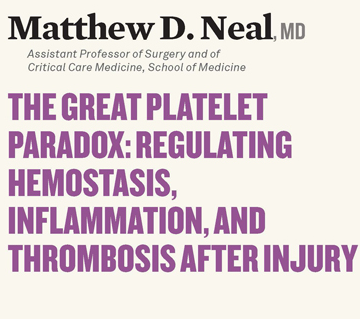
Trauma is the leading cause of mortality in young people, and uncontrolled hemorrhage is a leading cause of preventable death after injury. For those patients who survive an initial injury, excessive inflammation and thrombotic complications are major drivers of late morbidity and mortality. Platelets have long been recognized for their role in hemostasis; however, recent emphasis on the role of platelets as sentinel innate immune cells demonstrates a unique link between coagulation and immune responses. Understanding the intricate balance between appropriate platelet response to control bleeding and excessive platelet activation and dysfunction leading to inflammation and thrombotic complications is integral to care of severely injured patients. Neal and colleagues seek to understand the molecular mechanisms that govern innate immune-regulated signaling by platelets following trauma. Furthermore, they explore novel technology for platelet mimicry and drug delivery as tools for hemostasis and targeted cellular therapy for trauma-induced pathways of platelet activation as a means of attenuating inflammation and thrombotic complications. The overall goal of Neal’s work is to improve the understanding of platelet response after trauma so as to maximize effect when needed (hemostasis) and minimize the untoward consequences of excessive activation (such as microvascular injury and deep vein thrombosis).



























